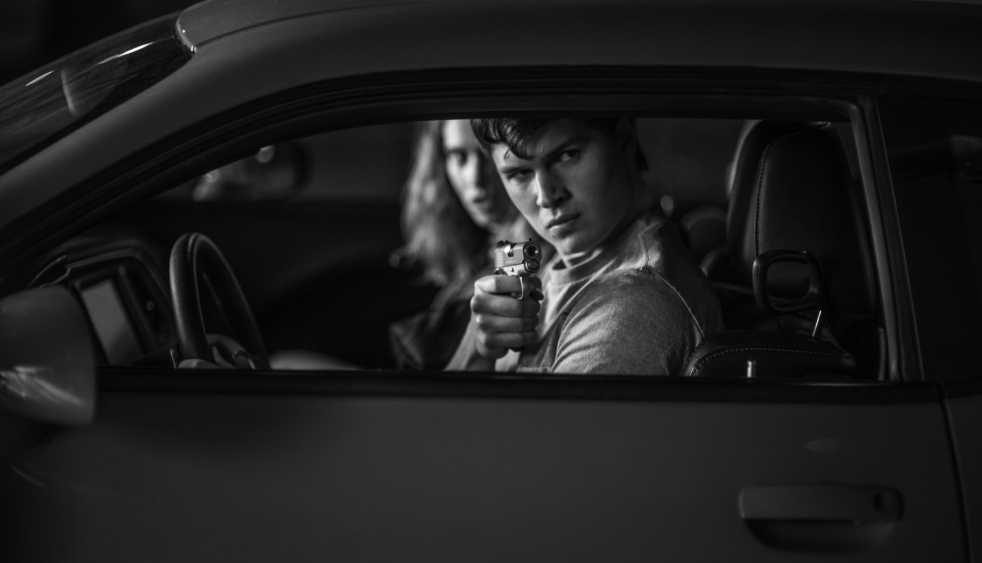At first trailer watch, everything about “Baby Driver” is exciting. A young getaway driver and music enthusiast wants to escape his life of crime with the woman he loves, but eluding the untiring clutches of a world of crime proves to be quite a difficult endeavor, especially when your boss is a heartless crime kingpin employing equally heartless and trigger-happy criminals.
That’s only the plot. The real excitement that “Baby Driver” conjures is thanks entirely to the eccentric and over-the-top nature of the film’s director, writer and executive producer Edgar Wright. If that name does not look particularly familiar, he is a relatively young British director whose most notable work to date is a quirky comedy film trilogy named after a type of ice cream.
However, if you are a fan of the type of cinema that brands itself as eccentric, quirky and exaggerated, then Wright’s name should look familiar : he is the mastermind director behind 2010’s “Scott Pilgrim vs. The World” and the executive producer of 2015’s “Ant Man” (he would have received a director’s credit for the Marvel film, but citing creative differences, he left before filming began).
So what makes Wright’s latest film the cinematic equivalent of jumping off a cliff after shotgunning a Redbull? To begin, the film’s cast is absolutely stacked, and each actor delivers. Jamie Foxx (“Django Unchained”), Kevin Spacey (“House of Cards”) and Jon Hamm (“Mad Men”) each have central roles in the film as Baby’s adversaries. Behind the hardened criminal exterior of each character lies a different type of latent insanity, each type cracking through as the movie barrels on. Within the film’s first 10 minutes is the car chase sequence of the year, allowing the film to put its right foot forward – or, more accurately, on the gas – as Baby shows why he is the best at what he does.
“Baby Driver” shines even in scenes where Ansel Elgort (“The Fault In Our Stars”) is not behind the wheel, as the film is still a pleasantly exciting stimulus to both eyes and ears. Baby is a walking manifestation of FL Studio, sampling snippets of short conversations and making beats with them using vintage recording equipment in his spare time.
Thanks to his ever-present iPods (multiple, for different moods and different days) to drown out the sound of his tinnitus, he skips and struts through the streets of Atlanta confidently. His movements are perfectly in sync with the impressively diverse soundtrack in the background of the movie.
These scenes, interwoven between the sharp wit of the dialogue and the adrenaline rush of the actions sequences, are the perfect visual and auditory confections to hold the movie together and give the movie its own unique flair. Impressively enough, the reason these scenes are so enjoyable is Ryan Heffington, the Grammy-nominated choreographer behind Sia’s music video for “Chandelier.” He was in charge of all the choreography for the film, and he too delivered in a truly stand-out way.
Should Wright continue to keep making movies using his trademark style and distributing them to an American audience, he will soon become one of those well-known, well-respected directors whose projects are identifiable from the first 5 minutes, similarly to how cinema aficionados everywhere have come to associate obsessively symmetrical scenes with Wes Anderson and 90 minute R-rated mixtures of improv comedy and cliché romance with Judd Apatow.
Between “Scott Pilgrim” and “Baby Driver,” Wright’s story niche seems to be an introspective hero with a heavy penchant for making music finding an assuming girl with whom he wants to spend forever with, but first he is forced to fight his way through villain after villain to earn the right to his carefree dream.
The actions sequences and gun standoffs could almost be described as cartoonish, and the final action scenes are comparable to a classic final boss battle. Ultimately, the meticulous construction of each spectacle provides a sensory overload coupled with an enjoyable, triumphant story.
Outside of the movie itself, a great deal of attention was also given to the film’s soundtrack. With 30 songs, the soundtrack is as long as the movie itself and veers in every possible stylistic direction. Paying homage to the hip-hop roots of Atlanta, the film was promoted with the soundtrack’s main single “Chase Me.” This psychedelic hip-hop track is by Danger Mouse, Run the Jewels and Big Boi – all veteran hip-hop acts who have at one point or another called Atlanta home.
Beyond this acoustic nod, the movie was both filmed in and takes place in downtown Atlanta, a refreshing change from Atlanta’s burgeoning film industry posing the city as California or New York. Using both film and music, Wright’s dedication to accurately reflecting the look, sound and even culture of Atlanta is another reason that “Baby Driver” succeeds.
It might seem like high praise, but “Baby Driver” is more than a movie. The comprehensive experience engages the whole mind and even allows one to relive the excitement after the credits have finished rolling. All things considered, it really is the perfect summertime blockbuster.
